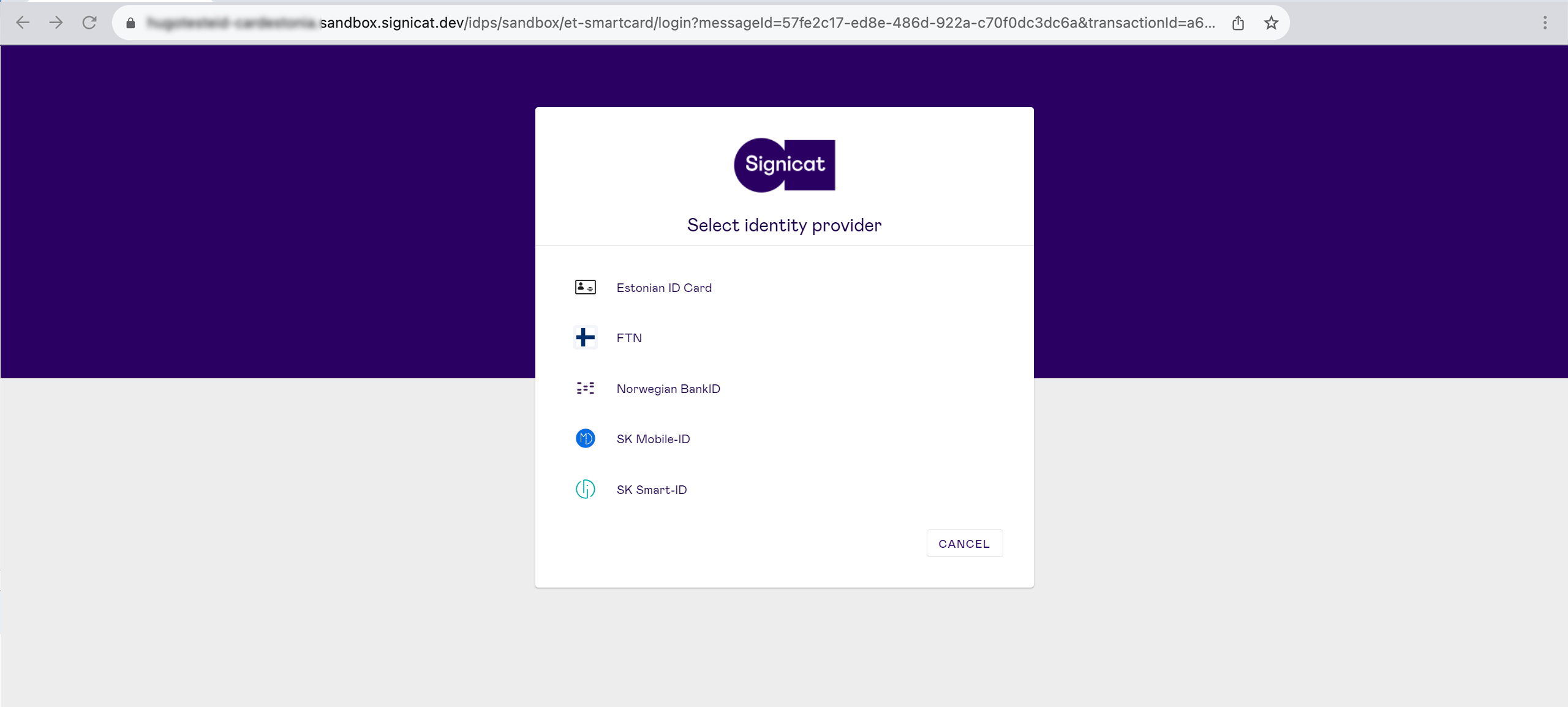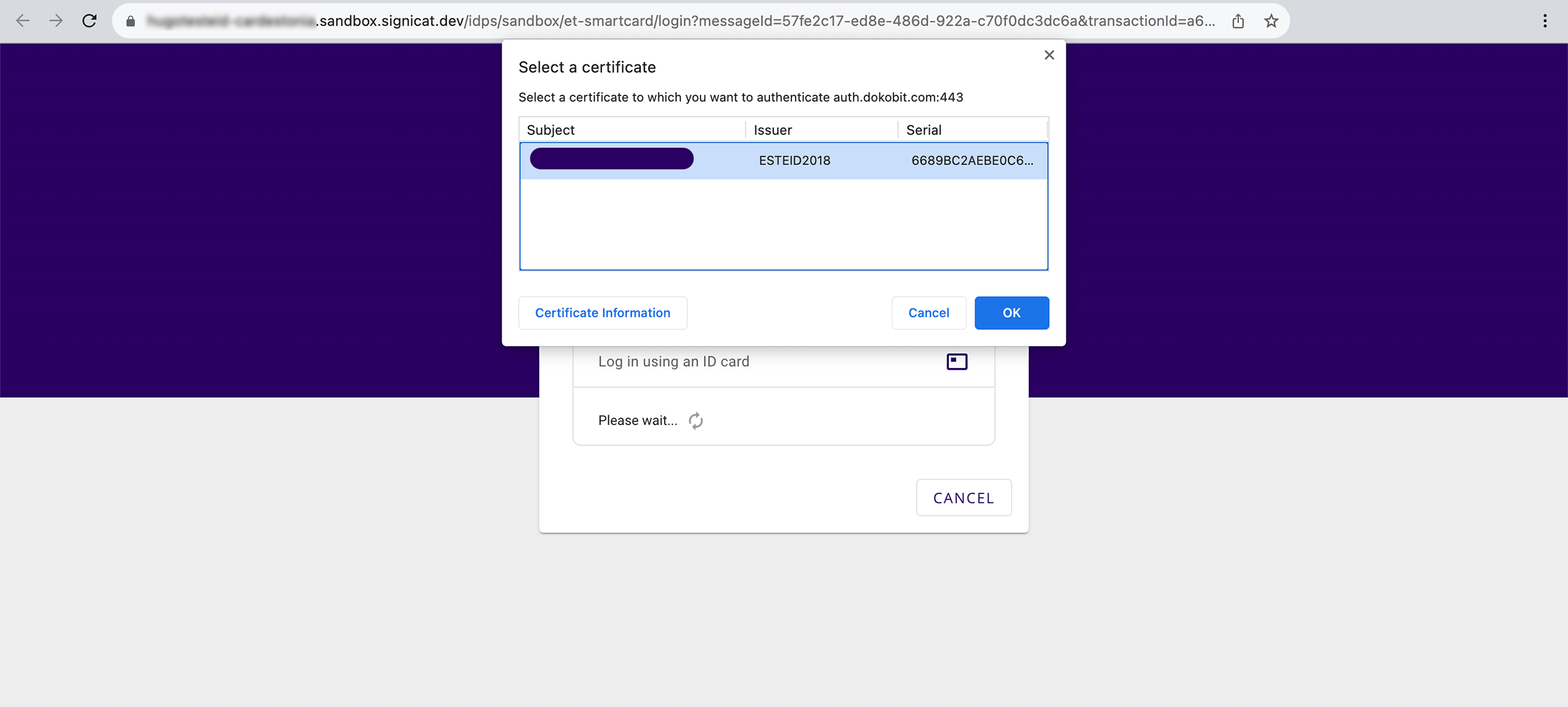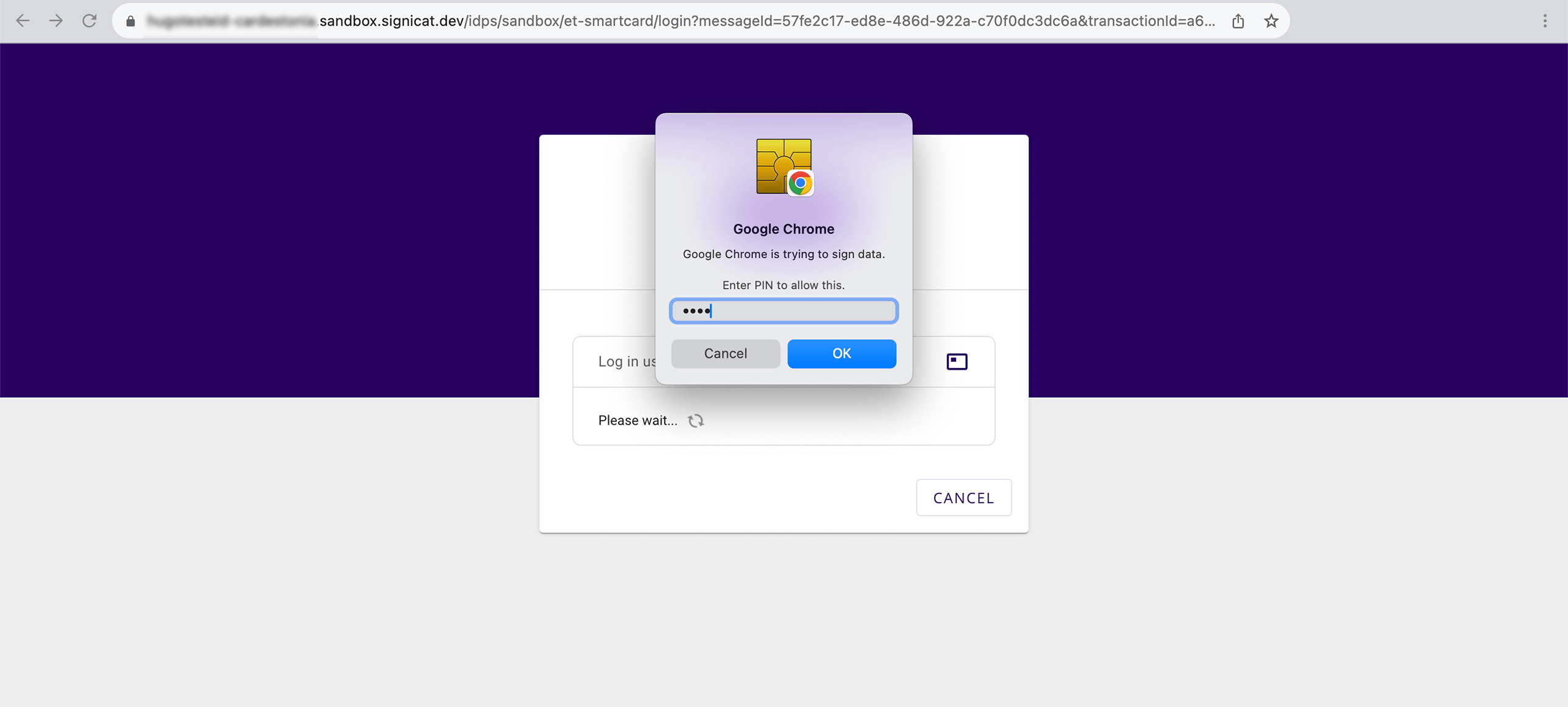# About the Estonian ID-card
The Estonian ID-card is a personal electronic ID, which Estonian citizens or EU citizens residing in Estonia can use for secure electronic authentication and signing. It is developed by the Estonian government as part of Estonia's broader initiative to establish a secure digital infrastructure, known as eEstonia (opens new window).
The ID-card is a smart card that includes a microchip, which stores personal information. It is issued by the Estonian Police and Border Guard Board (opens new window). Here is a sample ID-card (specimen):

To be able to use the Estonian ID-card, the user needs:
- A card reader to read the details on the ID-card.
- ID-card client software (opens new window) installed on their computer.
- PIN code to confirm their identity. The PIN code is issued together with the physical ID card. The ID-card also includes the needed certificates.
# Level of assurance
The Estonian ID-card is eIDAS (opens new window) certified and supports "high" level of assurance.
If you need more information about the level of assurance, please contact the identity provider at https://www.id.ee/en/rubriik/introduction/ (opens new window).
# Use case examples
Estonian ID-card can be used for:
Digital onboarding: To be able to apply for a loan, the bank may require a user to register and become a customer of this bank. The ID-card can be used as a stand alone method or in combination with other services provided by Signicat to verify an identity (see for example ID Document and Biometric verification).
Authentication: When the user has completed the digital onboarding process, the ID-card can be used to log into their account. The authentication will result in a type of response that depends on the type of authentication protocol used.
Electronic signing: Your bank customer can apply for a loan and sign the loan application with the ID-card.
# Authentication example
The following example illustrates a typical authentication session with an ID-card.
- The user selects Estonian ID-card as login method and is asked to insert the ID-card into their card reader.
- The user selects the certificate for their ID-card.
- The user provides their personal PIN code.
The user is authenticated from the certificate on the ID-card.
The actual screens may have a different graphical profile in your setup. These screens show the default theme in the Signicat Dashboard.
For details about how you can test this flow, see the Test page.
# Related ID methods
- The eEstonia (opens new window) ID-card solution is not limited to Estonia; Signicat also offers a similar setup of the ID-card solution for Lithuania, Latvia, Finland, Belgium, Iceland, and Poland (these are not documented yet).
- Smart-ID and Mobiil-ID are alternative ID methods offered in Estonia. In terms of similarity, both Smart-ID and Mobiil-ID are more mobile-centric compared to the ID-card that requires a physical card and a card reader. Each of these options provides users with flexibility in choosing the method that best suits their preferences and needs. The setup process for these three Estonian ID methods are quite similar.
- Signicat also supports the Estonian e-Residency cards in our eID Hub (this method is not documented yet).
# Support
Are there any features you think are missing? Anything you'd like to see on our site? You can share your thoughts on our community pages:
If you have questions, please contact Signicat Support:
See also our support page.


